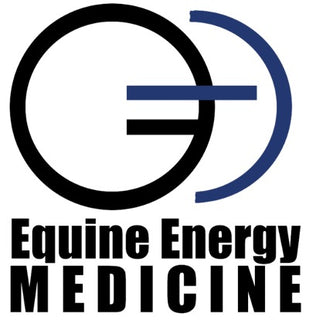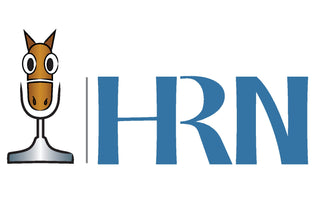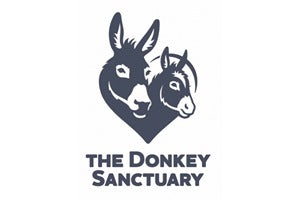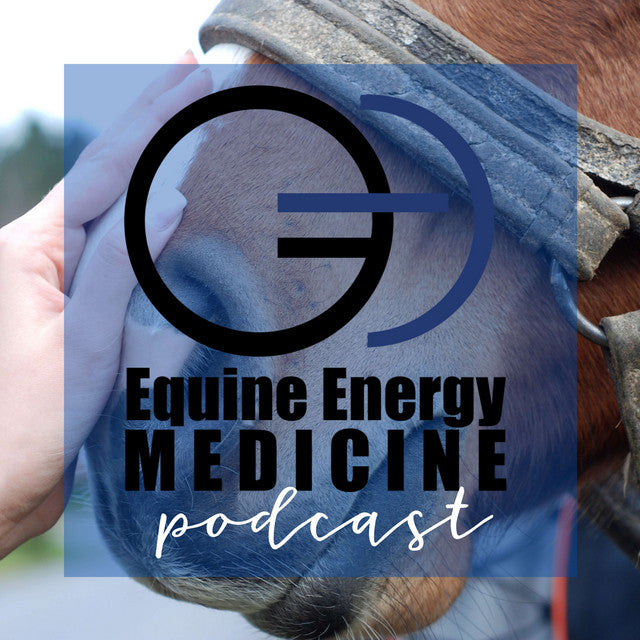Thinking of buying a horse or pony this year? Before you saddle up, it’s worth asking: can you really afford the true cost of ownership in 2025?
With inflation, hay shortages, and rising vet fees across the UK, the reality of owning a horse has shifted drastically. Whether you’re a new rider or an experienced equestrian, understanding the current costs is critical before (literally) taking the reins.
Let’s break it down and lay the numbers out for you!
Understanding the Initial Investment
Buying a horse isn’t just about the sale price. In the UK, you can pick up a leisure horse for around £2,000 to £7,000, but competition or specialised breeds can easily reach £10,000 to £20,000+.
Don't forget the pre-purchase vetting! A standard 5-stage pre-purchase exam can cost between £250 to £350, and that’s before any X-rays.
You’ll also need:
-
Tack and rugs – Saddle, bridle, saddlecloths, stable and turnout rugs can add up to £1,500 to £3,000
-
Transport – If you're using a transporter, expect to pay £1.50–£2.50 per mile, depending on distance and horse condition
Right from the start, it’s easy to spend £5,000+ before your horse has even stepped hoof in your stable.
Livery Options and Their Costs in the UK
UK livery yards offer different levels of care and cost:
-
Grass livery: Cheapest option, usually £100–£200/month, providing a field with access to shelter
-
DIY livery: You rent a stable and manage daily care. Costs range from £150–£300/month
-
Part livery: Yard staff handle weekday care, you do weekends. Typically £350–£600/month
-
Full livery: Staff manage everything, including exercise. Can range from £600 to £1,000/month depending on location and facilities
In locations like Surrey or Hertfordshire, full livery now regularly tops £1,200/month due to staff and feed costs.
Feed and Forage: Rising Prices in 2025
Feeding horses have never been inexpensive, but like everything else, prices for feed and forage are rising.
-
Hay: Bales now average £6–£9 per small bale or £45–£70 for large round bales
-
Hard feed: Depending on your horse’s workload, expect to spend £40–£100/month
-
Supplements: Joint, digestive, or hoof supplements can add another £20–£60/month
Poor growing seasons and increased demand have driven hay prices up nearly 25% since 2021. Forage is increasingly being imported, which pushes prices even higher in areas like the South East and South West.
Farrier Services and Hoof Care
A horse’s hooves need trimming every 6–8 weeks:
-
Barefoot trim: Around £30–£45 per visit
-
Shoeing (front only or full set): Between £60–£120
In many areas, farrier prices have jumped 15–20% due to fuel and material costs. A full set of shoes now routinely hits the £100 mark or higher, especially for remedial shoeing. But keep in mind, a great farrier is worth their weight in gold. Happy hoofs = happy horse (most of the time, anyway).
Veterinary Care and Emergencies
Routine vet care in the UK includes:
-
Vaccinations (flu and tetanus): £50–£80 per year
-
Teeth rasping: £50–£90 annually
-
Worming programmes: Often costs £60–£100 per year, depending on egg count tests
Emergency call-outs or lameness investigations can cost quite a bit more. A mild colic visit may cost £300, while colic surgery at a referral hospital could reach £5,000–£7,000.
With vet bills on the rise due to staffing and medication shortages, it’s wise to budget £1,000/year minimum for medical needs—and have an emergency reserve or insurance plan in place.
Equine Insurance in the UK: Is It Worth the Premium?
In the UK, horse insurance has become more of a necessity than a luxury.
Common coverage types include:
-
Veterinary cover: For illness and injury. Policies range from £25–£60/month based on age, value, and activities.
-
Third-party liability: Essential if your horse causes injury or damage. Often included or purchased separately for around £20–£40/year.
-
Loss of use or mortality: For valuable competition horses, this offers protection if your horse dies or becomes permanently unrideable.
Many reputable insurers like KBIS, SEIB, and Petplan Equine offer tailored policies. Given the rising cost of vet care, insuring your horse could save thousands in emergencies.
Daily Costs That Sneak Up on You
Beyond feed and vet bills, there are plenty of "little things" that add up fast:
-
Rugs (lightweight, stable, turnout): £60–£300 each, and you'll likely need several per season
-
Grooming kits, hoof picks, shampoos: Around £100/year
-
Fly masks, sprays, and deterrents: Easily £50–£100 each summer
-
Tack cleaning, replacement bits, girths: Ongoing costs of £150–£300/year
These aren't luxury extras. They're essential for daily horse care in British weather and variable grazing conditions.
Training and Riding Lessons
Keeping your horse and yourself well-taught is key.
-
Group lessons: Around £20–£35 per session
-
Private tuition: Typically £40–£80/hour, depending on your instructor's credentials
-
Professional schooling/training livery: £700–£1,200/month
Young horses or new riders will need consistent training, which adds to the yearly bill. There are more training options available now than ever before - including virtual!
Shows, Clinics, and Competitions
If you're planning to compete or attend riding clinics, here’s what to expect:
-
Entry fees: Local unaffiliated shows start at £10–£20 per class, while British Dressage, BE, or BS events can reach £100+ per event
-
Day stabling: Often £25–£40/day
-
Fuel and horse transport: Rising diesel costs make trailering a growing expense
Involvement in competitive riding easily adds £1,500–£3,000 annually to your budget.
Tack and Equipment Maintenance
Tack doesn't last forever!
-
Leather tack care products: £30–£50/year
-
Repairs and stitching: £20–£80 depending on complexity
-
New tack (saddle or bridle): £800–£2,000+ for quality gear
Budget for replacements, but know that investing in high-quality gear will result in much longer use! A local saddle fitter is also a must - prices vary!
Time Commitment: The Hidden Cost
Even if you pay for full livery, owning a horse takes time.
From mucking out and feeding to riding and rug changing (especially in Britain’s four-seasons-in-a-day climate ha!), horses demand attention daily.
Expect to commit 2–3 hours/day if you're hands-on, and consider the emotional toll during winter mud, wet rugs, and vet visits. You will be tired. But, dare we say, you’ll also be happy.
Horses make everything better.
Smart Ways to Save in the UK
You don’t need to cut corners, just plan smart:
-
Join riding clubs for discounts on clinics and events
-
Buy in bulk since feed and bedding are cheaper in volume
-
Upcycle and repair tack or rugs instead of buying new
-
Use local services such as a good local farrier, vet, and instructor instead of travelling far
-
Consider part-loaning your horse to offset costs and share responsibilities
DIY Livery: A British Tradition with Pros and Cons
Many UK owners opt for DIY livery, which offers more control but takes effort:
Pros:
-
Cheaper monthly bills
-
Flexibility with routines
Cons:
-
Daily responsibility, no matter the weather
-
Holidays are tricky without cover
-
Time-consuming around work or school
Great for the committed owner, but a challenge for those with tight schedules!
The UK Economy and the Horse Industry
Recent economic trends have hit equestrians hard:
-
Feed prices have risen over 20% since 2021
-
Hay is scarce due to wet summers and late harvests
-
Fuel prices mean more expensive transport and service call-outs
-
Rising wages and costs have made yard prices soar across much of England
All these elements mean that even basic horse care has jumped in price. and will likely keep rising.
Planning for the Long Haul
Horses live 20–30 years, sometimes longer, and not all of them work.
When you buy a horse, you're also committing to:
-
Retirement livery or care
-
Vet bills as they age
-
Feed or medication for medical conditions that pop up
Over a lifetime, a horse in the UK may cost you £100,000–£250,000, especially if you compete or pay for professional livery.
Is Owning a Horse in the UK Still Worth It?
For those who love the lifestyle - absolutely.
Horses offer companionship, purpose, joy, and even therapy. But they also demand consistent care, commitment, and cash.
With awareness, realistic budgeting, and preparation, owning a horse in the UK in 2025 is still a dream worth chasing. Just don’t gallop into it blindly. See what we did there?
Wrapping it Up
Horse ownership in the UK is no longer a low-cost hobby—it’s a serious financial and time investment. But for those who are prepared, it's also one of the most fulfilling experiences out there.
The smell of the stable. The quiet of an early morning hack. The bond that builds over time. Yes, it's expensive, but for many, it's worth every pound.
FAQs
How much does it cost to own a horse per year in the UK?
Expect to spend £6,000–£10,000/year on average, including livery, feed, farrier, and vet bills. Competitive riders or full-livery clients will spend more.
Has owning a horse become more expensive in the UK?
Yes—dramatically so since 2020. Inflation, hay shortages, and fuel costs have increased most major expenses.
Is it cheaper to keep a horse at home?
It can be, but the setup costs (stables, fencing, land maintenance) and time investment are significant.
Do I need insurance to own a horse in the UK?
It’s not legally required, but third-party insurance is highly recommended, and vet cover is a smart choice to avoid big bills.
Can I share a horse to reduce costs?
Absolutely. Loaning or part-sharing is a common UK approach that helps with both time and financial pressure.
Is DIY livery the cheapest option?
Usually, yes—but it requires daily involvement, even on cold, rainy mornings.
















